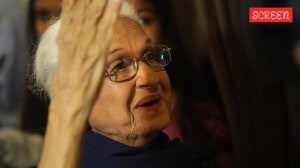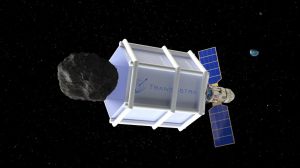The comic book is back, in deluxe coffee-table style
Two years ago, David Gabriel, a senior vice president at Marvel Comics...

Two years ago, David Gabriel, a senior vice president at Marvel Comics, publisher of Spider-Man and the X-Men, was sitting in the company’s Fifth Avenue offices with a few colleagues trying to come up with a product tie-in for the Fantastic Four film to be released that summer — “something to get the extreme collector excited,” he said.
The result was The Fantastic Four Omnibus, Volume 1, which would seem to be the opposite of a disposable comic book costing a few dollars or less. The oversize coffee table-style 848-page book reprinted the first 30 issues of the original Fantastic Four – the comic created by Stan Lee and Jack Kirby in 1961. The book, which weighs 5.4 pounds, would retail for $99.99.
Gabriel’s rational – “We’d buy it” -proved right. Not only did people buy it, it sold out in a few weeks.
The comic industry has taken notice. Publishers have flooded direct-market comic shops and chains with high-end, high-priced editions. Marvel, owned by Marvel Entertainment, now has a dozen or so volumes of its Omnibus series, with plans for more tie-ins pegged to next summer’s films based on Iron Man and the Hulk.
“People who have the original comics want these editions,” said Gabriel. While sales of single-issue copies are down from the boom years of the early 1990s, the comic business as a whole has been rebounding, fuelled partly by the demand for high-end collections by an aging audience nostalgic for the comics of its youth.
“Publishers are doing this because the market exists now,” said Kuo-Yu Liang, a vice president for Diamond Comic Distributors, the largest distributor of English-language comics in the world. “It reflects the demographics of the consumer, who is both older and more affluent. They can now afford to buy the complete Fantastic Four or Frank Miller’s Sin City Library for $100 or so.” The coffee table-isation of comics, said Liang, is partly because of another factor — the consistent growth of trade paperback editions of graphic novels, like Miller’s The Dark Knight Returns or Alan Moore’s Watchmen, since the late 1990s. According to DC, the trade paperback edition of Watchmen will have sold an estimated 95,000 copies by this year’s-end — far more than the 22,000 sold in 2001. After Sin City was made into a film in 2005, sales of the trade paperback, published by Dark Horse Comics, started to sell in greater volume and in nontraditional outlets.
DC Comics, publisher of Batman and Superman, has two luxury lines — Absolute, an even larger coffee table-style edition that the company began publishing in 2002, and their own Omnibus series.
Paul Levitz, president and publisher of DC, said, “We love our passionate readers who spend $1,000 to $1,500 a year on comics. But there’s a lot more people who are willing to pay $300 or $400 a year on graphic novels and luxury editions.”
For small publishers, like Fantagraphics Books, based in Seattle, getting their trade paperback and collections into nontraditional places like chain and independent bookstores, is a matter of economic necessity.
In 2002, Fantagraphics signed a distribution deal with the book publisher WW Norton. Two years later, it began issuing The Complete Peanuts by Charles M Schulz in hardcover volumes (there will be 25 in all). The collections have been best sellers for the company ever since.


- 01
- 02
- 03
- 04
- 05





























